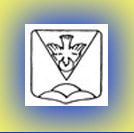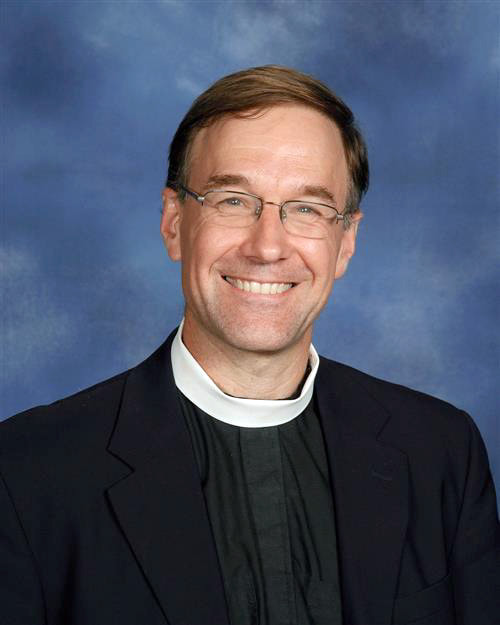|
Over the last week or so, I had a handful of conversations that all had a common theme. In one way or another, different people said that things are not right in our world, and that they felt powerless to do anything meaningful about it. One of those conversations was me saying that to my spiritual director.
Two things are bothering me at the moment. Recent presidential elections have all been unpleasant, and so far this one is no exception. But shooting one of the candidates is a new low. Down that road lies madness. Problems are also mounting closer to home. I recently read in the Northampton newspaper that one county in western Massachusetts has seen homelessness double in the last year. In another county homelessness is up fifty percent. I don’t know the numbers for Hamden County, but the Parish Cupboard reports that they are receiving many more requests for help this year than last. What are we supposed to do about political dysfunction? Or about the very real needs of our neighbors? Or about whatever other problems might be bothering us? Ignoring what is happening around us is not an option for anyone who takes Christian mission seriously. As Christians, we feel responsibility for our world. But the problems clearly exceed our capacity to solve them. And so we seem stuck in a grim place: with responsibility for problems that we do not have the ability to solve. I once heard that situation—responsibility without the necessary ability— described as “the problem before the problem.” Faced with challenges that seem overwhelming, we shut down. And shutting down prevents us from even beginning to take on the world’s problems. Our tendency to shut down is the problem before the problem. Thankfully, our Old Testament reading for this morning speaks to the problem before the problem. It picks up where we left off last week. David rules a reunited Israel from his new capital Jerusalem. As our reading begins, David has just settled in a new palace. But the ark of the covenant, which David processed into Jerusalem with such pomp and circumstance remains in a tent. That doesn’t seem great, so David decides to build a grand temple to house the ark more appropriately. Building a temple seems like a good and pious idea. But it turns out, God has other plans. Speaking through the prophet Nathan, God tells David not to do it. Why not? It is all about remembering who is in charge. God asks, “Are you [David] the one to build me [God] a house to live in?” Do you think I need your help? If so, you have it backwards. Then God reminds David just how it is that David has become king. Now, it is worth remembering that David was one of the great adventurers of all time. David was tough, shrewd, brave, talented. In Scripture, David’s story reads like an action novel with David as the hero. But, Nathan reminds David, God is the one who made it all happen. “I took you from the pasture…to be prince over my people Israel.” “I have been with you.” “I will make for you a great name.” “I will appoint a place for my people.” “I will give you rest from all your enemies.” “I will raise up your offspring after you.” “I will establish his kingdom.” God is the ultimate agent in David’s rise to power. God remains in charge now that David is king. And God will see to the issue of David’s succession. The lesson is simple, although I will add a bit of complexity in a minute. God is the one who decides what happens, not David. God is responsible for how things work out, not David. Back to our time. Our world is a LOT bigger and more complicated than David’s, and that means our challenges are bigger and more complicated than his. Making matters worse, not many of us are as tough, shrewd, brave, or talented as David was. Certainly I am not. If fixing our world, or our nation, or the problems that we encounter here in western Massachusetts, or even the problems in my own life, if fixing any of those is my responsibility, we are all out of luck. I really don’t have the ability to solve our problems. What we learn in our reading is, that was true of King David, too. Like David, we can’t do what needs to be done except with God’s help. Like David, we cannot control what happens in our world or in our lives. That inability to control our present and our future can be frustrating. But it is also liberating. We can’t be responsible for our world. We can put that burden down. And that is how we escape from the problem before the problem, from the sense of being overwhelmed by responsibilities we can’t meet. We turn the world over to God, and we let God handle it. Because only God can. But there is an important sequel to the story of David and the temple, and this is where the complexity comes in. David did not build a temple to house the ark of the covenant. That was a task for David’s son Solomon, as Nathan tells David in our passage. But David didn’t simply forget about the temple either. David didn’t do nothing. On the contrary, David did all the preparatory work for building the temple. David made the plans. David collected construction materials and money to cover the building costs. David assigned in advance the various personnel for the temple—priests, and Levites, and gatekeepers, and musicians, and so on. Those positions were hereditary, so David’s assignments shaped the functioning of the temple for generations. Indeed, as First Chronicles tells the story of David’s reign, preparing for the temple was the single most important thing David did as king. David did not actually build the temple. God reserved that honor for Solomon. But David did so much towards the construction of the temple that all Solomon had to do was give the order to start. That, too, is a lesson for us. We are not responsible for solving the world’s problems, which is a good thing because we don’t have the ability to get it done. Only God can save us. But letting go of responsibility for our world is not an excuse for doing nothing. It’s exactly the opposite. Knowing that only God can save us, but that God can save us, that only God can carry the responsibility for the world, but that God does carry the responsibility for the world, that empowers us. That gives us hope which enables us to carry on. Our task as God’s people is not to save the world. Our task as God’s people is to listen for God’s call, and then to do whatever we can in answer to that call, knowing always that the final result depends on God, not on us. I have no idea what the future holds for our country. But we are called to do what we can to promote God’s vision of peace, justice, and love. I cannot solve the problems that burden so many of our neighbors. But we are called to love them as ourselves, and that means to help them as we are able. My prayer for us is that we can let go of the idea that everything depends on us, that we can turn to God in faith and hope, and that we can then act in love, in God’s name and with God’s help. In Christ’s name. Amen.
1 Comment
|
Rector
Rev. Dr. Harvey Hill Third Order Franciscan Archives
July 2024
Categories |


 RSS Feed
RSS Feed
